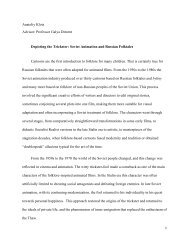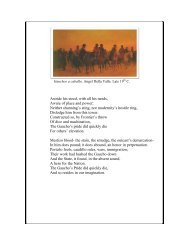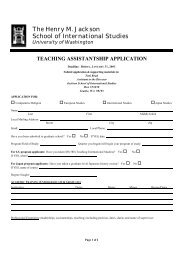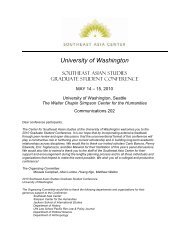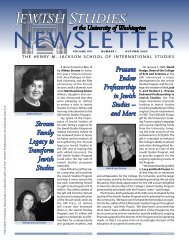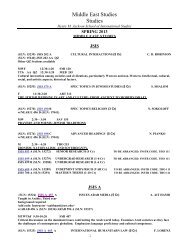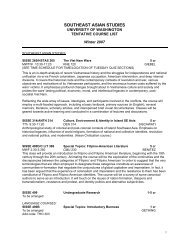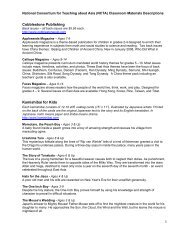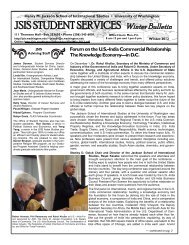to view full paper
to view full paper
to view full paper
Create successful ePaper yourself
Turn your PDF publications into a flip-book with our unique Google optimized e-Paper software.
Kirghizia (Kirghiz is a Turkic language) 32 In addition, I have found a Nanai version in the Far<br />
East (Tungusic language, related <strong>to</strong> Mongolian and Turkic languages) 33 and a Georgian version<br />
in the Caucasus (Kartvelian language—an orphan group not related <strong>to</strong> any linguistic family). 34<br />
International examples with cross-dressing <strong>to</strong> escape an unacceptable union are reported <strong>to</strong><br />
occasionally include some variants of Type 510B (Peau d’Asne), in which the heroine escapes an<br />
incestuous father or brother. 35 The development of the overall tale with the cross-dressed heroine<br />
who is as strong and skillful or more so than men in its Central Asian versions is not reflected in<br />
ATU and appears <strong>to</strong> be uniquely regional. I call this type Woman’s Magical Horse.<br />
Practically all the tales start with a girl’s flight from evil. Her magical talking horse warns<br />
her, guides her, carries her away from danger, and helps her find a good husband. In the<br />
Mongolian folktale “Soning Tsetseg (Remarkable Flower),” an evil “black monster mangus”<br />
wants <strong>to</strong> marry the eponymous princess; the princess, however, has a magical talking bay horse<br />
and escapes with its help. 36 The unnamed heroine of another version of this Mongolian tale<br />
“Жеребёнок-спаситель [Colt the Savior]” also escapes from mangus with the help of a sandy-<br />
colored colt. 37 The Kalmyk heroine escapes on a wonder-horse from a monster that comes <strong>to</strong><br />
32 “Tormuz” in Contes Kirghiz de la steppe et de la montagne [Kirghiz tales from the steppe and from the<br />
mountains], translated in<strong>to</strong> French by Remy Dor (Publications Orientalistes de France, 1983), 56-58.<br />
33 “Endohochen” in The Flying Tiger: Women Shamans and S<strong>to</strong>rytellers of the Amur, collected and translated by<br />
Kira Van Deusen (Montreal: McGill-Queen’s University Press, 2001), 81-88.<br />
34 “The Tale of the Valley Flower,” in Shorena Kurtsikidze and Vakhtang Chikovaini, Ethnography and Folklore of<br />
the Georgia-Chechnya Border: Images, Cus<strong>to</strong>ms, Myths and Folk Tales of the Peripheries (Munich: Lincom<br />
Europa, 2008), 348-354.<br />
35 D.L. Ashliman, Note 1 for “Running Away and Hiding” in Incest in Indo-European Folktales (Electronic Source<br />
http://www.pitt.edu/~dash/incest.html), last accessed 12/14/11.<br />
36 Translated from Mongolian by Nicholas Poppe, Jr, in The Mongolia Society Occasional Papers: Number Four;<br />
Mongolian Folktales, S<strong>to</strong>ries and Proverbs in English Translation, edited by John R. Krueger (Blooming<strong>to</strong>n, IN:<br />
The Mongolia Society, 1967), 35-38.<br />
37 “Жеребёнок-спаситель [Colt the Savior]” in Монгольские сказки [Mongolian foktales] in Russian translation,<br />
compiled by Georgii Mikhailov, (Moscow: Gosudarstvennoje izdatel’stvo khudozhestvennoi literatury, 1962), 92-<br />
96.<br />
14



